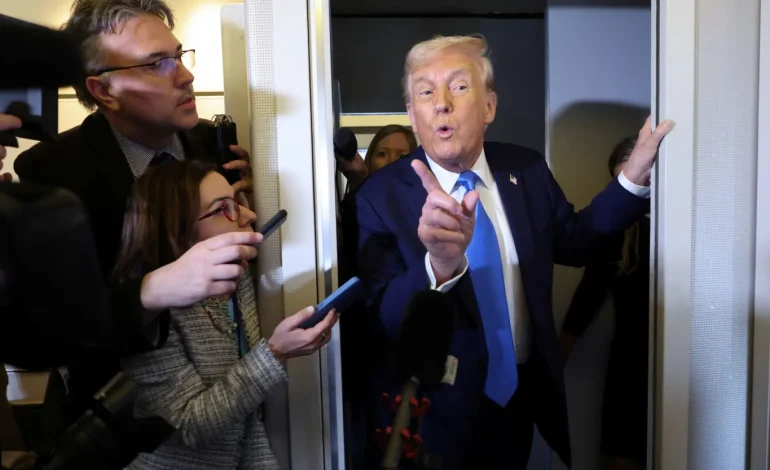Economic growth in the US nearly ground to a halt in the first quarter of 2025, with GDP expanding just 0.3%, according to CNBC’s Rapid Update, which compiles forecasts from 14 economists.
The sharp slowdown comes amid growing concerns over stagflation—a mix of weak growth and persistent inflation—driven by policy uncertainty and new tariffs imposed by the Trump administration.
The 0.3% GDP growth rate marks a significant drop from the 2.3% growth recorded in the final quarter of 2024, making it the weakest economic performance since the post-pandemic recovery in 2022. At the same time, core PCE inflation—the Federal Reserve’s preferred measure of price increases—is expected to remain stuck at 2.9% for most of the year, delaying hopes for a meaningful decline in inflation.
Behind the sluggish GDP numbers is declining consumer and business sentiment, which is now reflected in real economic activity. The Commerce Department reported that inflation-adjusted consumer spending barely rose in February (0.1%) after a decline of 0.6% in January. In response, Action Economics slashed its forecast for first-quarter consumer spending growth to just 0.2%, a sharp drop from the 4% growth rate seen in the fourth quarter of last year.
Another factor weighing on GDP is a surge of imports ahead of tariff increases, which has distorted economic data. Imports, which are subtracted from GDP calculations, have risen as businesses rushed to stockpile goods before new trade barriers take effect.
While most economists in the survey do not expect a recession this year, there is concern that an economy growing at just 0.3% could easily slip into negative territory.
Oxford Economics, which provided the lowest first-quarter GDP estimate at -1.6%, expects the economy to recover in the second quarter, with growth rebounding to 1.9%. However, other economists caution that additional tariffs could limit any rebound.
Mark Zandi, chief economist at Moody’s Analytics, warned that if tariffs remain in place, the economy could contract for two consecutive quarters, signaling a recession.
“While our baseline doesn’t show a decline in real GDP, given the mounting global trade war and job cuts, there is a good chance GDP will decline in the first and even the second quarters of this year,” Zandi said.
Complicating the outlook for policymakers, inflation remains elevated, limiting the Federal Reserve’s ability to cut interest rates in response to slowing growth. The core PCE inflation rate is expected to rise to 3% in the second quarter and stay near that level for most of the year before falling to 2.6% by early 2026.
While financial markets have been expecting rate cuts from the Fed, the persistently high inflation numbers could delay or reduce the number of cuts the central bank is willing to make. Fed officials have repeatedly stated that they need to see clear and sustained progress on inflation before considering policy easing.
Most economists still expect a moderate recovery, with GDP forecasts averaging 1.4% growth in the second quarter, 1.6% in the third, and 2% in the final quarter of 2025. However, those projections depend on trade policy stabilizing and inflation easing.










The latest news in your social feeds
Subscribe to our social media platforms to stay tuned